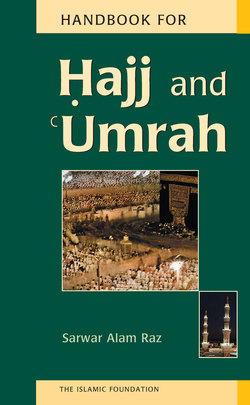Читать книгу Handbook for Hajj and Umrah - Sarwar Alam Raz - Страница 8
ОглавлениеA Personal Note
This handbook was born out of the experiences of the writer and his fellow pilgrims before and during the Ḥajj of 1997. While preparing for this momentous journey, the writer read a large number of books on the subject and also spoke to many friends who had already been to Ḥajj. The lack of ready and straightforward answers to simple questions, as well as the paucity of a book which presented the totality of the Ḥajj process in a concise and easy-to-understand manner, was rather obvious. Although there was no lack of guidebooks for Ḥajj, their treatment of Ḥajj left much to be desired.
The usual format of almost all books on Ḥajj consists of a collection of Qur’ānic verses, aḥādīth, traditions, historical background of places and events, and recommended prayers. This collection of information is interspersed with repetitious details of the rites of Ḥajj and ʿUmrah. It usually requires several careful readings and a long, painstaking search for one to extract from these descriptions the useful details of Ḥajj and ʿUmrah. One cannot simply pick up one of these texts and hope to perform Ḥajj with confidence and peace of mind.
Whereas most books have adequate information on Ḥajj and ʿUmrah, none contain any significant information on how one can best prepare for the journey and what one can expect during one’s stay in Saudi Arabia. It is strongly felt by the writer that a book of practical use and application will provide a much needed addition to the literature already available on the subject.
This book is designed as a guide for prospective pilgrims and is not a religious or devotional tract. It does not include the usual Qur’ānic verses and aḥādīth about Ḥajj, nor does it go into the history of places, events, and the rites of Ḥajj to any significant extent. There are a large number of books which deal with these topics quite well, and the interested reader is advised to consult them to satisfy his curiosity and thirst for knowledge.
The writer has tried to make this book “user-friendly”. However, it is difficult to make a book, containing dozens of Arabic technical terms referring to the rites of Ḥajj and ʿUmrah, readily understandable to people unfamiliar with this vocabulary. A certain amount of effort on the part of the reader is, therefore, essential in understanding this book.
Chapter 1 (How to Use This Handbook) provides a good starting point by suggesting ways of getting the most out of this book.
Chapter 2 (Glossary) is the heart of the book in that it is nearly impossible to comprehend the technical parts of the book without a thorough knowledge of this chapter. The reader, in all probability, will have to refer back to this chapter frequently during the course of reading subsequent parts of the book.
Chapter 3 (Before You Leave) contains a great deal of essential and practical information designed to help the reader prepare for the journey.
Chapter 4 (When You Get to Saudi Arabia) complements this information with detailed specifics about what the pilgrim can expect upon arrival in Saudi Arabia. These two chapters contain information not readily available elsewhere, and should go a long way towards providing the pilgrim with the peace of mind necessary for his Ḥajj to be meaningful.
Chapter 5 (Ḥajj and ʿUmrah) describes the details of these two rites step by step using the definitions and other background material presented earlier. This is not a stand-alone Chapter in that its full understanding is predicated on that of Chapter 2.
Chapter 6 (Prayers and Supplications) presents the devotionals commonly recited by pilgrims during Ḥajj. One is not necessarily obliged to recite these prayers for the Ḥajj to be valid. However, they are very meaningful recitations, are easy to memorise, and will serve the pilgrim well in his quest for a successful pilgrimage.
Chapter 7 (A Visit to Madinah) offers a brief and concise description of Al-Masjid al-Nabawī and other places of religious and historical interest in and around Madinah.
The writer wishes to thank the numerous authors whose work he has freely consulted during the preparation of this book. He is indebted to Imām Moujahed Bakhach of the Islamic Association of Tarrant County, Fort Worth, Texas, U.S.A. for his technical review of the book. Thanks are due to Dr. Manazir Ahsan and his colleagues, of the Islamic Foundation, U.K. for the professionalism shown by them pursuant upon the publication of this book. The valuable criticism, and numerous suggestions by the writer’s son Salman Sarwar Razi led to many improvements in the text and are gratefully acknowledged. Last, but not least, the writer is deeply thankful to his wife, Qaisar Razi, for the patience, encouragement, and understanding she has shown during the preparation of this work.
Sarwar Alam Raz
Fort Worth, TX, U.S.A.
Rabīʿ al-Thāni 1420
August 1999
